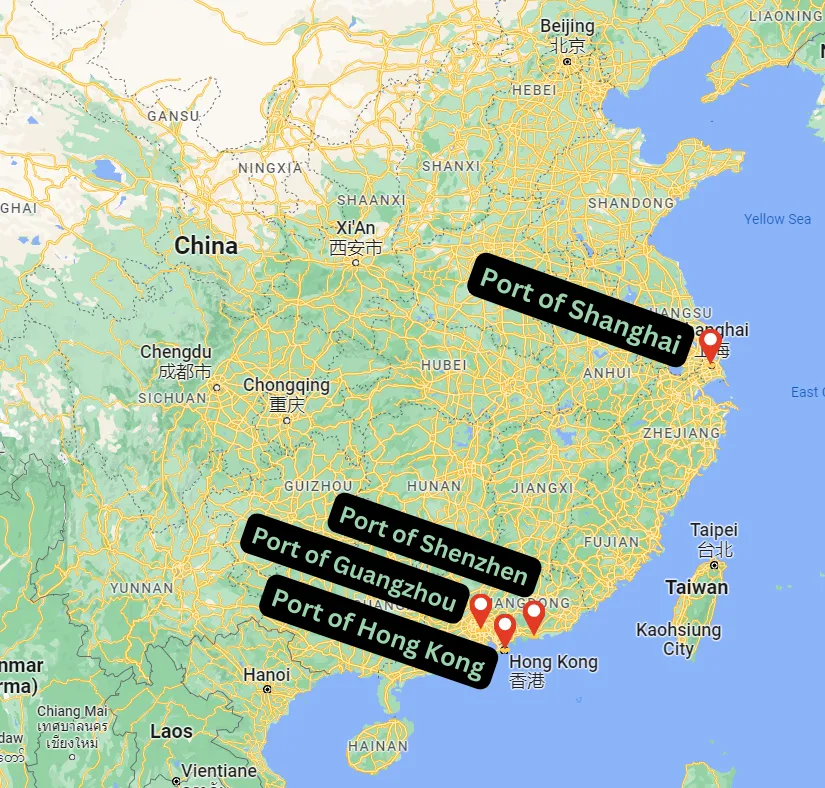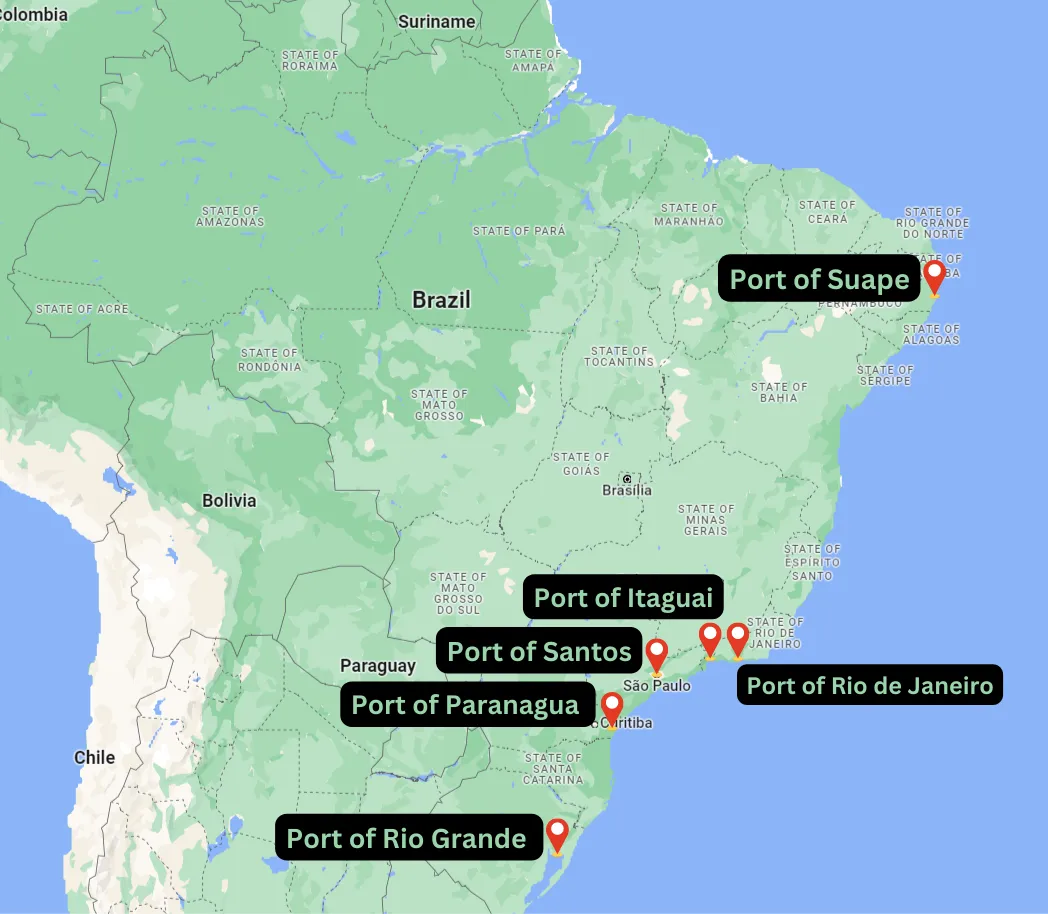China has undoubtedly become a global power, and its market potential is still growing. Its influence can be seen in the markets of almost every country, be it trade or politics. Thanks to the improvement of relations between Brazil and China, these two countries have become great business partners since the early 2000s. After all, China is Brazil’s main supplier of manufactured products. This article discusses shipping from China to Brazil.
Shipping from China to Brazil – modes of transportation
Ocean freight from China to Brazil
Ocean freight has two major benefits: affordable cost and great capacity. Although the transit time may be a bit long, varying between 30 and 50 days, the maritime service allows the shipments to arrive at regular intervals. Thanks to China’s abundance of ports and the Brazilian coastal line, two main sea routes enable the vessels to arrive at the eastern or northern coast of Brazil, depending on where the product should be shipped to.
Major seaports of China
- The Port of Shanghai is both the world’s and China’s biggest port. It is linked with the Yangtze River, so the location allows convenient transit from inside the country.
- The Port of Shenzhen is a collective name for a group of ports located on the city’s coastline. It is one of the busiest in the world and is constantly developing.
- The Port of Guangzhou is another collective of ports situated in the Guangdong province, linking the industry of the neighboring provinces with the rest of the world.
- The Port of Hong Kong is a deep-water port ideal for mooring all types of ships.

Major seaports in Brazil
- Port of Santos is the busiest port in Latin America and Brazil’s leading port in container traffic. It is strategically located in the region of São Paulo, Brazil’s biggest economic area, and is the main gateway for both imported and exported products circulating in Brazil.
- Port of Rio de Janeiro, just north of Santos, is the country’s third busiest port thanks to shipping contribution to the economic area of Rio de Janeiro.
- The Port of Paranaguá is the largest bulk port in Latin America. It is focused mainly on grain export, with other agricultural products such as soybean and derived products.
- The Port of Itaguai is close to the city of Rio de Janeiro. It specializes in exporting industrial products from Brazil’s largest mining territory, Minas Gerais.
- The Port of Rio Grande is important for trade in the whole of South America since it is located in the middle of the continent.
- The Port of Suape is the country’s fifth-biggest, largest public port, and most technologically advanced. It was dedicated to fuel and bulk cereal transportation.

Air freight from Brazil to China
Due to its high rates, air freight should be considered when handling perishable goods or other products in high demand and urgent shipments. On average, the transit takes around six days, but in special circumstances and with a much higher rate, the goods can be shipped in just one day.
Brazil has only 14 international airports, while China has 60. Currently, only LAN Cargo Airlines offers a direct flight connecting Brazil with China.
Major airports in Brazil
- São Paulo (SAO/GRU)
- Rio de Janeiro (RIO)
- Brasilia (BSB)
- Porto Alegre (POA)
- Manaus (MOA)
- Curitiba (CWB)
- Campinas (VCP)

Is there a train freight from China to Brazil?
Since the Atlantic Ocean divides South America and Asia, no direct rail freight line connects Brazil and China. Despite Chinese investments in Brazilian railways, the project to connect the Atlantic Coast in Brazil with the Pacific Coast in Peru did not go into action. The project was supposed to shorten freight transit time and cut costs. Despite the setback, Brazil does have its rail network, currently focused on freight transportation of local products to the ports, yet it is not the most effective method of transportation around the country.
Sourcing to Brazil
Requirements to import to Brazil
Unfortunately, China and Brazil have not signed any trade agreements. As a result, the process of providing required documents at customs may be time-consuming and difficult.
The first step of authorization should be registration on the electronic Siscomex platform. Registration is obligatory if the importer wants to be able to do international trade. The Siscomex requires two Radar licenses, which the Brazilian Federal Revenue issues. Furthermore, all other documentation, such as the bill of lading, commercial invoice, and a packing list of your goods. You can read more about the required documentation on ShipHub.
Duty and tax
Brazil uses HS Code along with the NCM to identify traded goods. The majority of the world recognizes the HS Code, whereas the NCM is recognizable only by the members of Mercosur, a South American trade bloc. NCM is based on the HS Code but is more specific. It is essential to understand how both systems work. All duties and taxes can be determined based on the code of imported goods.
Importing any goods to Brazil is dutiable by three major taxes:
- the Import Duty (II)
- the Industrialized Product Tax (IPI)
- the merchandise and Service Circulation Tax (ICMS).
There are also other smaller taxes levied on the entrance of foreign goods into Brazilian territory or fees charged to support the marine sector.
How much does shipping from China to Brazil cost?
The easiest way to research the shipping cost for a given cargo is by requesting a quote on ShipHub. The report will contain an offer from verified freight forwarders.


Summary
The immense distance and the ocean between China and Brazil limit transport options significantly. For bulk transport, maritime shipping offers slower transit time for a lower price. On the other hand, air freight is more expensive, yet faster and perfect for handling perishables and smaller quantities. You can request quotes on ShipHub to compare offers.






